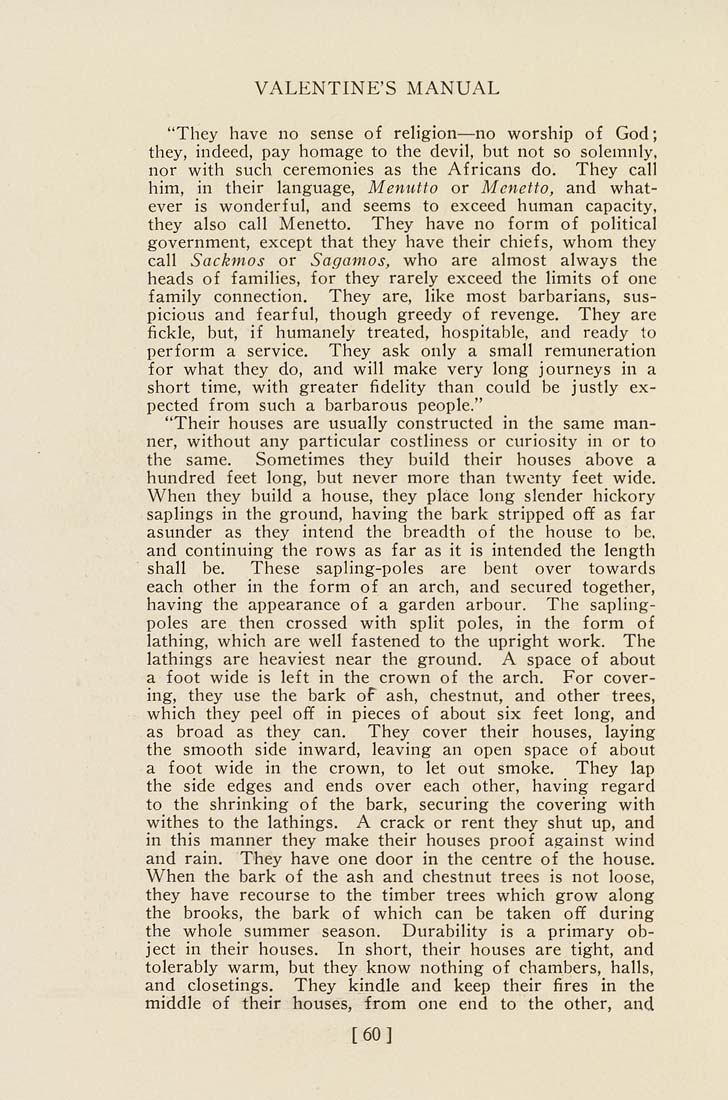VALENTINE'S MANUAL
"They have no sense of religion—no worship of God;
they, indeed, pay homage to the devil, but not so soleinnly,
nor with such ceremonies as the Afrieans do. They call
him, in their language, Menutto or Mcnetto, and what-
ever is wonderful, and seems to exceed human capacity,
they also call Menetto. They have no form of politica!
government, except that they have their chiefs, whom they
call Sackmos or Sagamos, who are almost always the
heads of families, for they rarely exceed the limits of one
family connection. They are, like most barbarians, sus-
picious and fearful, though greedy of revenge. They are
fickle, but, if humanely treated, hospitable, and ready to
perform a service. They ask only a small remuneration
for what thcy do, and will make very long journeys in a
short time, with greater fidelity than could be justly ex-
pected from such a barbarous people."
"Their houses are usually constructed in the same man-
ner, without any particular costliness or curiosity in or to
the same. Sometimes they build their houses above a
hundred feet long, but never more than twenty feet wide.
When they build a house, they place long slender hickory
saplings in the ground, having the bark stripped off as far
asunder as they intend the breadth of the house to be,
and continuing the rows as far as it is intended the length
shall be. These sapling-poles are bent over towards
each other in the form of an arch, and secured together,
having the appearance of a garden arbour. The sapling-
poles are then crossed with split poles, in the form of
lathing, which are well fastened to the upright work. The
lathings are heaviest near the ground. A space of about
a foot wide is left in the crown of the arch. For cover-
ing, they use the bark oF ash, chestnut, and other trees,
which they peel off in pieces of about six feet long, and
as broad as they can. They cover their houses, laying
the smooth side inward, leaving an open space of about
a foot wide in the crown, to let out smoke. They ĩap
the side edges and ends over each other, having regard
to the shrinking of the bark, securing the covering with
withes to the lathings. A crack or rent they shut up, and
in this manner they make their houses proof against wind
and rain. They have one door in the centre of the house.
When the bark of the ash and chestnut trees is not loose,
they have recourse to the timber trees which grow along
the brooks, the bark of which can be taken off during
the whole summer season. Durability is a primary ob-
ject in their houses. In short, their houses are tight, and
tolerably warm, but they know nothing of chambers, halls,
and closetings. They kindle and keep their fires in the
middle of their houses, from one end to the other, and
[60]
|








